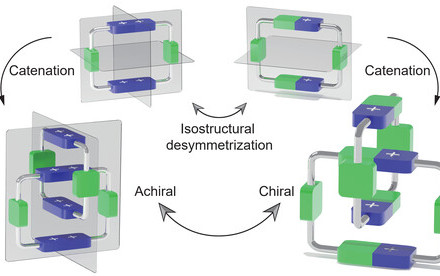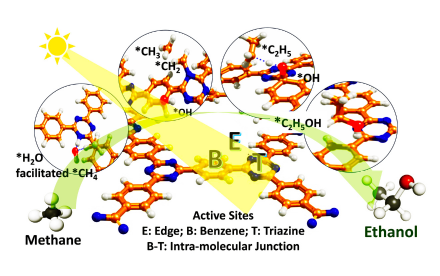23 Dec 2024
HKU Chemistry Team Develops Advanced Dual-Metal Catalyst for Efficient Clean Energy Reactions

Nowadays, the application of renewable energy has become essential in sustainable development. Among them, the field of high-efficiency and low-pollution fuel cells has always been a hot topic in the eyes of scientific researchers. Advances in fuel cell materials and system design, optimization of catalyst materials, and development of new electrolytes are all driving the commercialization of fuel cells. Driven by the goal of global carbon neutrality, fuel cells have emerged as one of the key technologies for lowering carbon emissions, particularly in the industrial and heavy transportation sectors where conventional fossil fuels are difficult to replace.
As a cathode reaction in fuel cells, the oxygen reduction reaction entails a multi-step proton-electron transfer procedure. It limits the ability to further increase the fuel cell’s overall efficiency because it lowers the thermodynamic performance of the entire reaction and partially diminishes oxygen. The most advanced zinc-air batteries and fuel cell catalysts available today are based on precious metals, and alternatives for these metals cannot simultaneously increase the ORR conversion rate and the water generation’s Faradaic efficiency (FE). Therefore, selectively achieving four-electron reduction to generate water at a low cost has always been a challenge in research.
Recently, the research group of Prof. Edmund Tse from the Department of Chemistry of the University of Hong Kong (HKU) constructed a bimetallic hybrid bilayer membrane (HBM) system and strategically introduced the CuFe bimetallic catalytic centre, which significantly improved the ORR performance. CuFe active sites are supported on tris(2-pyridylmethyl)amine (TPA) HBM, and the system exhibits a Faradaic efficiency of up to 94% in the oxygen reduction reaction. Their findings have recently been published in JACS.
The double-layer membrane system uses a gold sheet electrode as the loading substrate. It forms a first layer of self-assembled monolayer membrane covering the catalytic active centre through the adsorption between gold and sulfur and then loads the second layer of the lipid layer doped with functional molecules on it through intermolecular forces. The researchers first built a single metal catalytic system by adding non-precious metal ions Cu, Fe, Ni, and Co to investigate its catalytic efficacy in oxygen reduction processes. The Fe-based catalyst demonstrated the best selectivity, whereas the Cu-based catalytic active centre demonstrated the best activity.
The researchers also built a CuFe bimetallic-based catalytic active centre HBM based on the catalytic outcomes of the single metal-based system and the natural oxidase structure. The Faraday efficiency of oxygen reduction to water is 94%, the greatest of all built HBMs, and the oxygen reduction activity of this bimetallic HBM system is 1.4 times that of the analogous single metal system.
It is worth noting that the ORR current density of the newly constructed CuFe bimetallic HBM in the hydrophobic lipid environment increased instead of decreased, and its current was 1.7 times that of the HBM system in which the catalytic site was directly exposed to the solvent. This unique phenomenon is manifested as a 2e–+2e– reaction path that occurs in tandem with the initial four-electron reaction pathway and is thought to represent a synergistic catalytic effect in the bimetallic hybrid membrane system. The results of DFT calculations corroborate this experimental phenomenon.
The researchers also constructed a zinc-air battery using this CuFe HBM for the first time, proving the usefulness of the knowledge acquired from the HBM technique in practical applications. It is anticipated that these interfacial PCET findings will stimulate new design principles for subsequent catalysts, offer new guidelines for the composition and structure of metal active centres necessary for effective ORR, and offer new perspectives on the sensible design of the microenvironment surrounding ORR catalysts in fuel cell applications.
About the research team
This research was accomplished independently by Professor Edmund Tse’s team in the Department of Chemistry (Faculty of Science, HKU). Postdoctoral fellow Dr Tian Zeng and Ms. Jiu Chen from Prof. Tse’s group at HKU Chemistry are the first authors of this paper. Another researcher, Dr Zuo Hang Yu Gareth from HKU, also contributed to this research project. This work was supported by the Research Grants Council of Hong Kong (TRS: T23-713/22-R, ECS: 27301120, GRF: 17308323, 17308724, RGC-CAS: JLFS/P-701/24), Innovation Technology Fund (ITF: TSSSU/HKU/23/05/2) and ITSP Seed Project (ITC: ITS/271/22).
Click here to learn more about Professor Edmund Tse’s research group.

Caption: A Biomimetic catalyst design; B Preparation method of the HBM; C Catalytic selectivity and activities of SAMs and HBMs; D Tuning the microenvironment of electrocatalysts.
About the research paper
“Tian Zeng, Jiu Chen, Zuo Hang Yu, Edmund C. M. Tse* CuFe Cooperativity at the Membrane-Electrode Interface Elicits a Tandem 2e–+2e– Mechanism for Exclusive O2-to-H2O Electroreduction. J. Am. Chem. Soc., 2024¸146, 31757–31767”.
The journal paper can be accessed from here.







